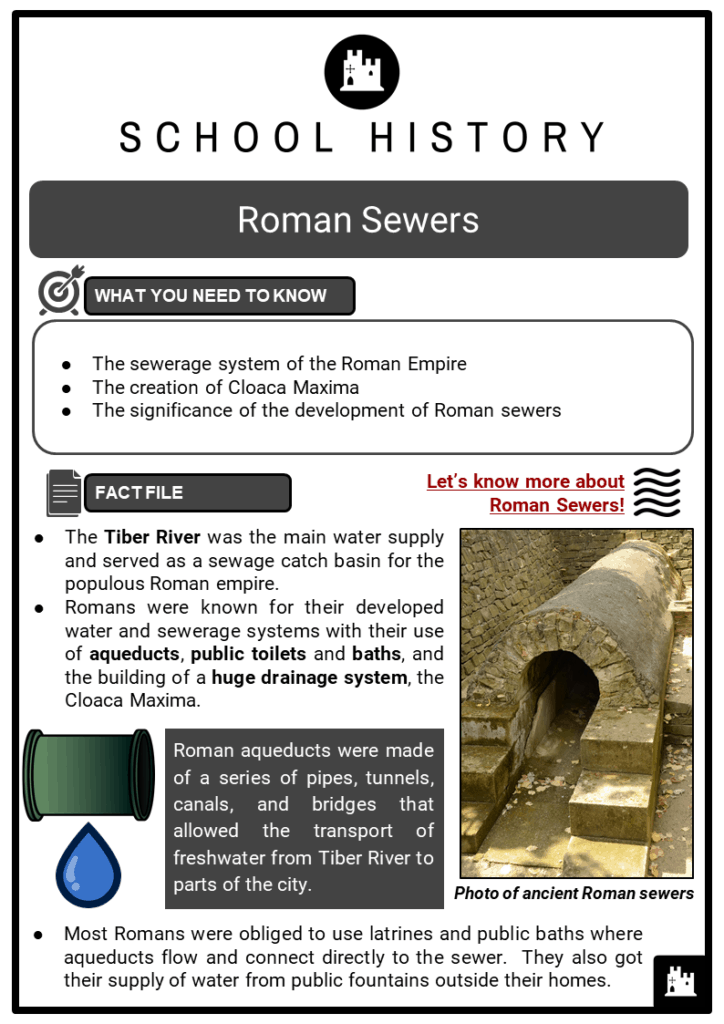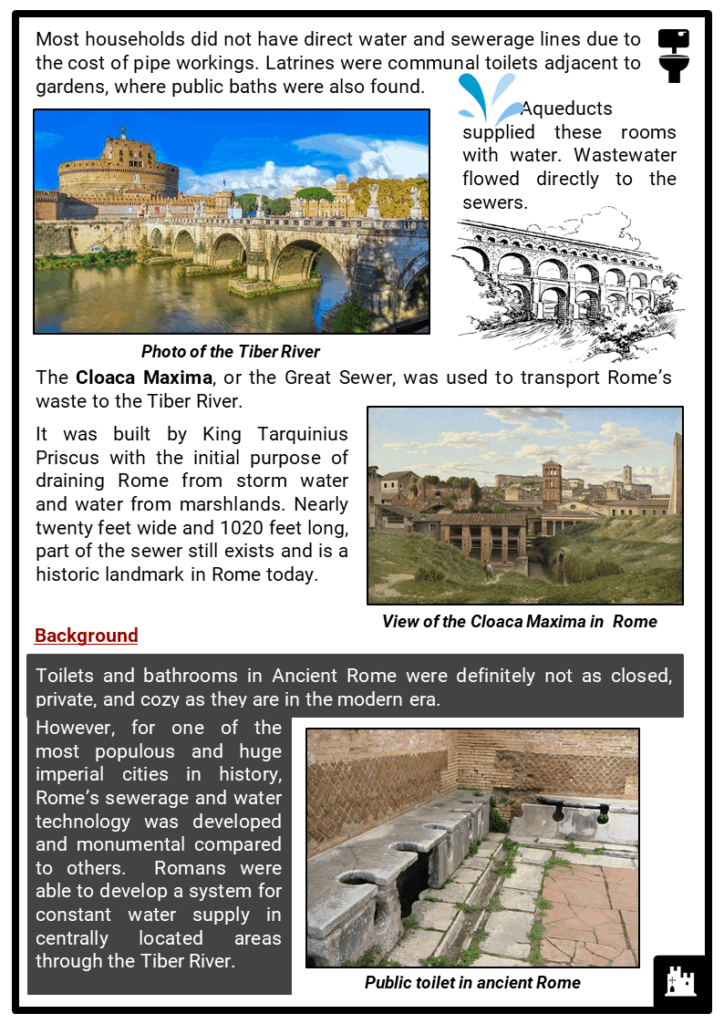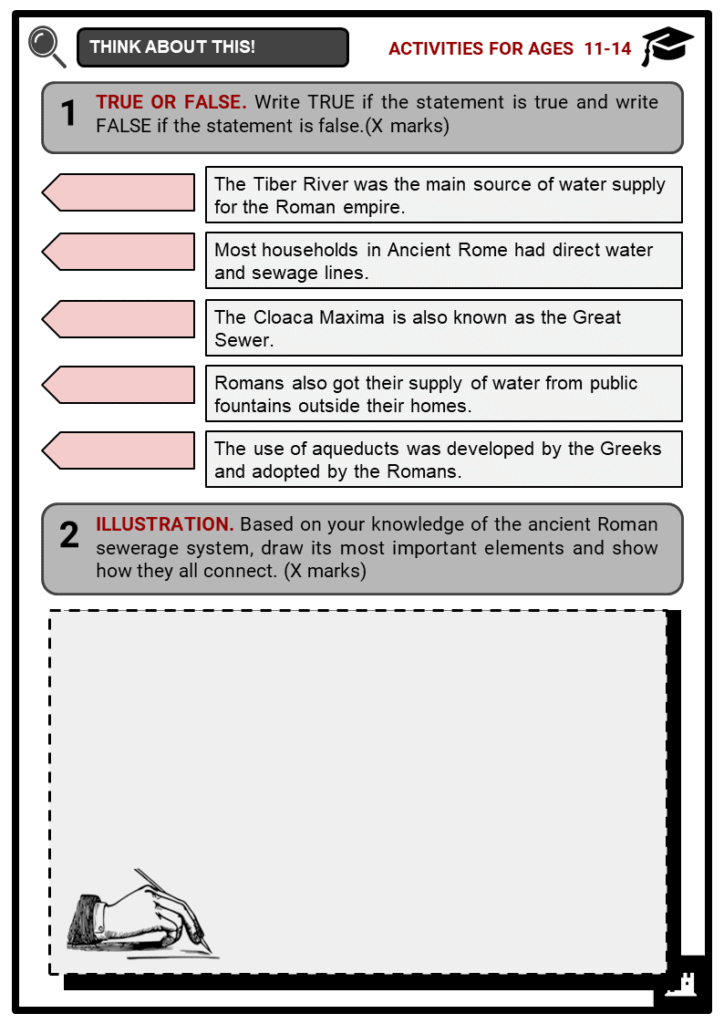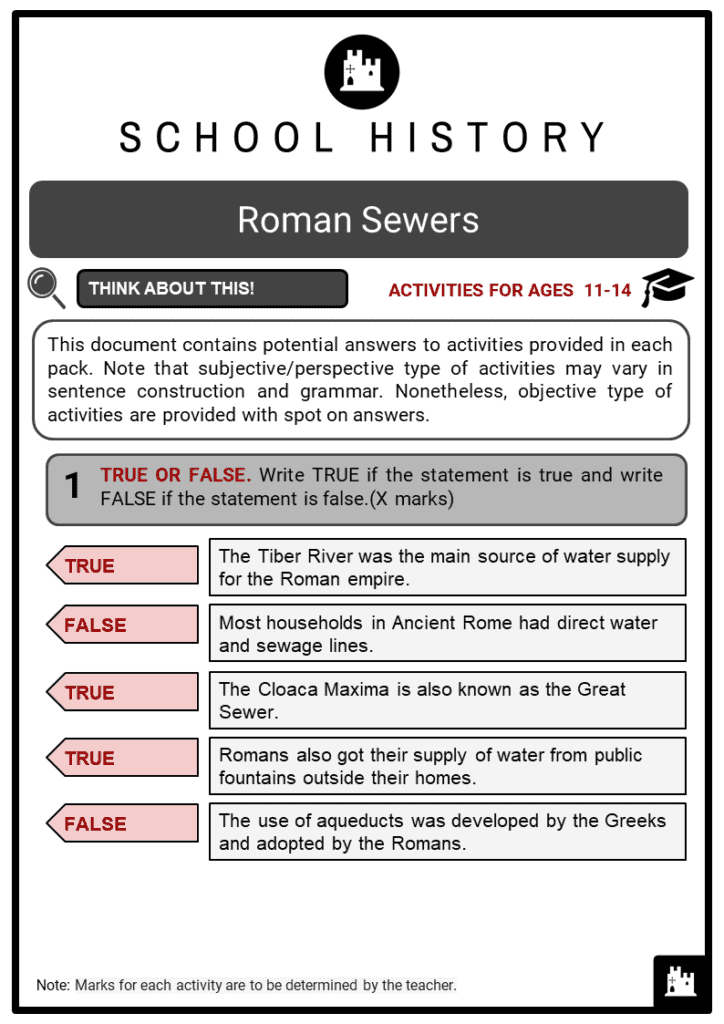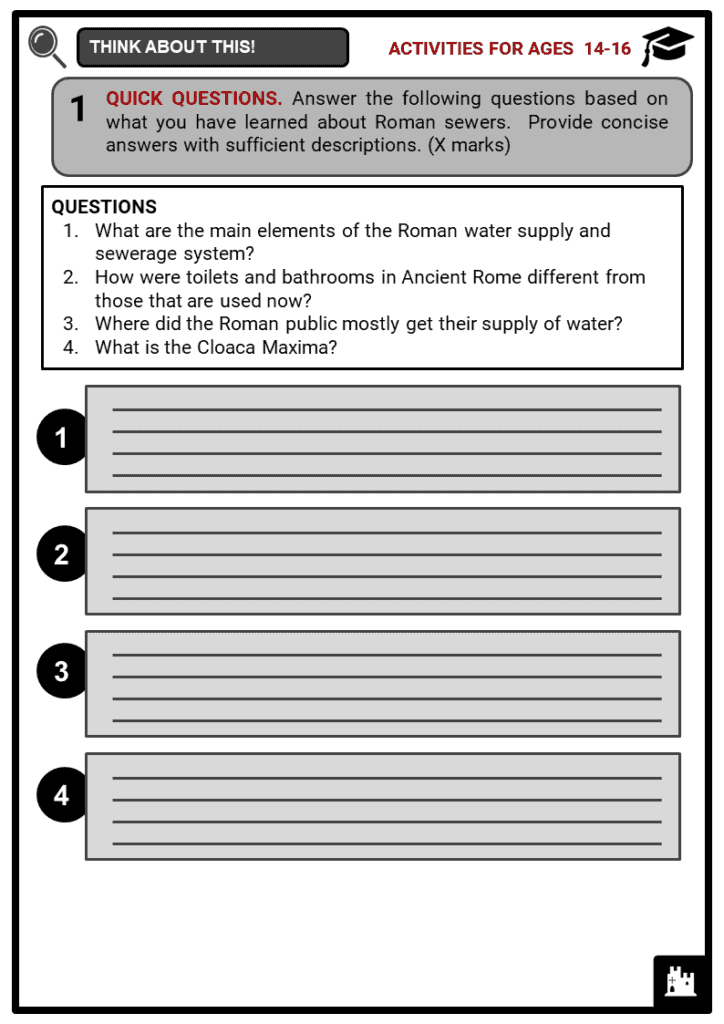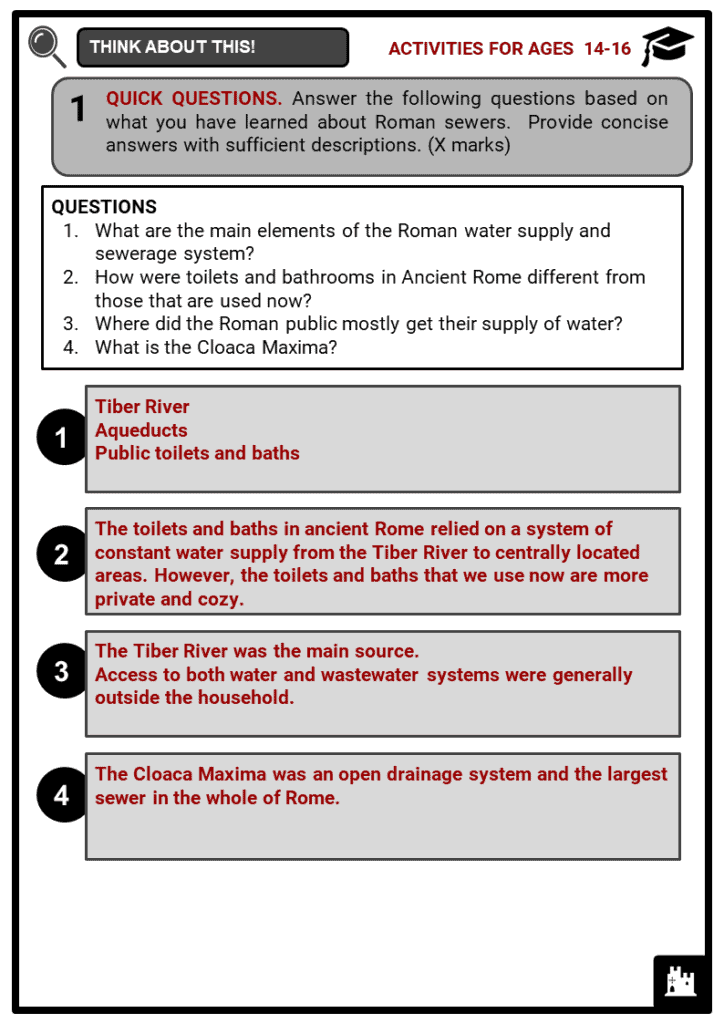Download Roman Sewers Worksheets
Do you want to save dozens of hours in time? Get your evenings and weekends back? Be able to teach Roman Sewers to your students?
Our worksheet bundle includes a fact file and printable worksheets and student activities. Perfect for both the classroom and homeschooling!
Table of Contents
Add a header to begin generating the table of contents
Summary
- The sewerage system of the Roman Empire
- The creation of Cloaca Maxima
- The significance of the development of Roman sewers
Key Facts And Information
Let’s know more about Roman Sewers!
- The Tiber River was the main water supply and served as a sewage catch basin for the populous Roman empire.
- Romans were known for their developed water and sewerage systems with their use of aqueducts, public toilets and baths, and the building of a huge drainage system, the Cloaca Maxima.
- Roman aqueducts were made of a series of pipes, tunnels, canals, and bridges that allowed the transport of freshwater from Tiber River to parts of the city.
- Most Romans were obliged to use latrines and public baths where aqueducts flow and connect directly to the sewer. They also got their supply of water from public fountains outside their homes.
- Most households did not have direct water and sewerage lines due to the cost of pipe workings. Latrines were communal toilets adjacent to gardens, where public baths were also found.
- Aqueducts supplied these rooms with water. Wastewater flowed directly to the sewers.
- The Cloaca Maxima, or the Great Sewer, was used to transport Rome’s waste to the Tiber River.
- It was built by King Tarquinius Priscus with the initial purpose of draining Rome from storm water and water from marshlands. Nearly twenty feet wide and 1020 feet long, part of the sewer still exists and is a historic landmark in Rome today.
Background
- Toilets and bathrooms in Ancient Rome were definitely not as closed, private, and cozy as they are in the modern era.
- However, for one of the most populous and huge imperial cities in history, Rome’s sewerage and water technology was developed and monumental compared to others. Romans were able to develop a system for constant water supply in centrally located areas through the Tiber River.
- Access to both water and wastewater systems were generally outside the household. As such, Romans spent much of their time outside their houses for their hygienic and personal needs.
Aqueducts
- The use of aqueducts was a highlight of Roman engineering.
- They improved on older designs of civilizations in Egypt and India by building an extensive and complex channel to transport fresh water across their territories.
- For over 500 years, from 312 B.C to 226 A.D, aqueduct systems were built in Rome. Roman aqueducts are known for being constructed using round stone arches.
- Aside from bridges, Roman aqueducts were made of a series of pipes, tunnels, and canals. Gravity and the natural slope of the land allowed the water from the Tiber River to be channelled throughout the city. This water was used for drinking, irrigation, and to supply hundreds of public fountains and baths.
- The number of direct connections to households from an aqueduct was limited. Most people were obliged to get their water from a public fountain.
Latrines and Public Baths
- As water did not directly reach households, Romans built a system for their toilets and baths.
- Latrines, which were communal toilets or outhouses, were built in different parts of the cities. Theses “rooms of easement” were made of rectangular platforms with several adjacent seats, some with privacy partitions, but most without. These latrine rooms were often shared by any gender.
- The many public toilets all had neat stone seats and even a hand basin. Although the way they were laid out meant you were sat side by side with up to twenty other people!
- Water from the aqueduct flowed continuously in troughs beneath the latrine seats.
- The sewage, along with waste bath water, went directly to the sewers beneath the city that carried it out via the Tiber River.
- Later archeological studies showed, however, that households with their own toilet not directly connected to the sewers existed.
- These private toilets, usually one-seater, were built close to the kitchen.
- Collected waste from a household was either used as fertilizer or sold to farmers for their own gardens.
- Having a private toilet connected to the sewers was difficult due to its cost and the fragility of the pipes.
The Cloaca Maxima
- Roman drainage systems were constructed primarily for storm
water, and to drain excess water from the streets. Later, the need for sanitary sewerage grew, as used water - from households, latrines, and public bathrooms ended up either on the streets or created marshlands.
- In 6th century BC, Roman engineers built the Cloaca Maxima, or the Great Sewer, during the reign of Tarquinius Priscus, the third-to-the-last King of Rome.
- Cloaca Maxima was an open drainage system and the largest sewer in the whole of Rome. The sewer was nearly twenty feet wide and 1,020 feet in length. Its initial purpose was to empty the marshlands and carry stored storm water from the central city to the Tiber River.
- A century later, the open drain was covered, and all water from latrines and public baths emptied into the system. The continuous flow of water from the aqueducts helped remove waste from the sewer and keep it clear from obstructions.
- The Great Sewer served Rome for over 2400 years, and even today, it is still used to transport storm water away from the city.
Conclusion
- Romans knew the importance of supplying clean water to their huge city. Studies suggest that before the aqueducts, they relied on the Tiber River for a supply of drinking water.
- The Cloaca Maxima was not made to sanitize the city, but to remove water that pooled on the city’s uneven streets and from low-lying areas. Despite this, it was still successful for being a centralized catch basin from the latrines and public baths that people used.
- Roman sewers moved dirty water away from where it hindered cleanliness. This helped the economic growth and the urban and industrial development in the city.
- A friend of Emperor Augustus once had himself rowed through the sewers in a boat. These sewers must have been smelly as even the Romans couldn’t bring enough water to wash out the sewers properly. Roman drains were built to last and York still uses a section of Roman sewer, still doing its job after nearly 2000 years. The Victorian sewer around it is crumbling.

